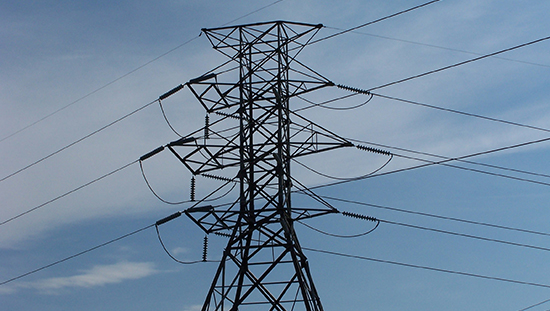
How a building’s energy performance is affected by renewable energy and load shedding
By Frikkie Malan, head of sustainability at Remote Metering SolutionsWhile most people instinctively expect that a building with solar PV plant will have a better EPC rating than a building that does not rely on any form of renewable energy, this is not the case.
According to the SANS 1544 (Energy performance certificates for buildings) all energy carriers into a building must be included in the calculation of a building’s energy performance. An energy carrier is defined in the standard as an “energy form or system, including but not limited to, electricity, gas, fossil fuels, and renewable energy”. While it is obvious that grid supplied electricity consumed in a building should count towards the energy performance, some of the other carriers need closer examination.
Let us start with the way “renewable energy” is treated in the calculation of a building’s energy performance rating. The inclusion of renewable energy in the definition of energy carriers implies that the energy performance and consequently the Energy Performance Certificate (EPC) rating of a building will not improve should the property owner invest in, say, a solar PV plant that provides some, or even all, of the electricity consumed in the building. It might be argued that this is incorrect – that a building’s EPC rating should reflect the fact that renewable energy is used in the building, moving the building closer towards the “net zero” ideal. However, the purpose of an EPC is to determine the energy performance of a building, not the carbon emission performance thereof.
An example should explain this a bit better: Consider a building that is terribly inefficient, with the worst possible EPC rating of G. This very same building is now upgraded with a solar PV plant and battery storage, and for all intents the building can go “off the grid”, yet nothing was done to improve the efficiency of the building. Therefore, the same amount of kWh will be consumed in the building, despite the PV plant and storage upgrade. Has the building’s energy performance improved? In terms of efficiency and therefore its EPC rating, certainly not. In terms of carbon emissions, it undeniably has. But reporting on the carbon emissions of a building is not the purpose of EPCs (at least not in its current format).
The next energy carrier that we consider is the supply of back-up power to a building with a generator. Thanks to load shedding, most building owners in South Africa have no option but to make provision for some form of back-up power, usually in the form of a standby generator.
For this example, we are not considering a PV plant with battery storage as a back-up power solution. According to the standard, the energy value of the fuel consumed by generators that provide power to a building must be used to determine that building’s EPC rating, and not the energy value of the electricity supplied by the generator. Since generators are not terribly efficient at converting fuel to electricity, the use of the fuel energy value instead of the delivered energy value will have an adverse impact on a building’s energy performance. As an estimate, let us assume that for every kWh of electricity provided by a generator, approximately 3.3 kWh of fuel is consumed (this is based on an assumed average generator efficiency of 30%). So, the more a building relies on back-up power (for instance due to load shedding) the worse that building’s energy performance becomes!
And this has nothing to do with the inherent efficiency of the building, but rather with the unavoidable use of back-up power to maintain building services, comfort, security, and safety for the occupants.
Example demonstrate how load shedding, which necessitates the use of standby generators
A simple example calculation will demonstrate how load shedding, which necessitates the use of standby generators, has an adverse effect on a building’s EPC rating:
- Consider a hypothetical office building with a net floor area of 8 000 m2.
- In this example, we assume that the building uses 200 kWh/m2/annum, which translates to 1 600 000 kWh per year.
- This building is in a climate zone with a reference maximum energy consumption of 200 kWh/m2/annum (from SANS 10400-XA).
- This building will receive an EPC rating of D, as the ratio of actual consumption relative to the maximum allowed consumption (from SANS 10400-XA) is 1. For a D rating this ratio must be between 0.9 and 1.1.
If this building had to rely on standby generator power for 10% of the time during the 12-month EPC assessment period, this means that the generator will supply approximately 160 000 kWh (10% of the total).
Assuming that the average efficiency of a diesel generator is around 30%, the energy value of the fuel used to generate this 160 000 kWh is about 533 000 kWh. This is the value that must be used to determine the EPC rating of this building.

This example shows how a building that relies on standby power for 10% of the time could receive an EPC rating that is one rating worse in comparison to the rating it would have received if it could rely on the grid for 100% of the time. At the risk of stating the obvious, it is fair to say that most building owners will only use (more expensive) generator power out of unavoidable necessity and not by choice. But this results in an EPC “penalty”. To take this to an extreme: A building that can achieve an A rating when using grid supplied electricity could very well receive an D or even an E rating (this depends on generator efficiency) if it must rely on standby power for 100% of the time! Now fortunately this is not the case in real life, but it illustrates the point. Inherently, this hypothetical building is just as efficient now, using generator power as when it could rely 100% on the grid for its power supply. The EPC rating is worse, not because the building itself is more inefficient, but because generators are not efficient at converting fuel to electricity.
EPCs are a new development that must be put into practice to grow and mature. All EPC stakeholders therefore have an important role to play to make EPCs become an effective and valued Building Energy Performance benchmark. This will only happen stakeholders continue to participate in the ongoing vigorous EPC debate, raise our concerns, and propose solutions to those concerns.
To this end, the establishment of an EPC Community Forum where these conversations can take place is essential. You can share your thoughts on this idea with the EPC Certification Bureau at the following e-mail address info@epc-certification.com.

